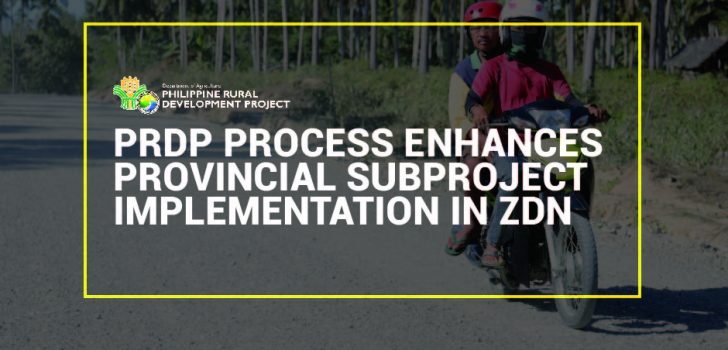
PRDP Process Enhances Provincial Subproject Implementation in ZDN
“Through PRDP implementation in the province, we have learned a lot and have applied techniques and skills in implementing similar nationally funded projects,” said Leticia Jagonia, OIC of the Provincial Planning and Development Office of Zamboanga del Norte.
Jagonia recounts the tedious nature of the project implementation of the two FMR subprojects in their province, namely the FMR subproject in Tampilisan and the Kalawit-Labason FMR. Much of the work was done during the preparation stage in complying with all the documentary requirements prescribed by PRDP just to have the subprojects approved. The challenge was in keeping up with the pace of completion of the requirements while also managing issues such as lack of manpower and fast turnover in their office.
The irony according to Jagonia, is that after being trained by PRDP in subproject implementation, a lot of their staff were pirated by private contractors and other companies in the past due to the additional technical skills they received during their training. Nevertheless, Jagonia and her team were able to make adjustments and still come up with the necessary requirements to have their subprojects approved.
PRDP subprojects employ science based tools before being approved for implementation, namely the value-chain analysis (VCA), provincial commodity investment plan (PCIP) and expanded vulnerability and suitability assessment (E-VSA). According to Luisita Abella, I-PLAN head of RPCO 9, these are necessary because with the limited resources of the government, subprojects should be prioritized to maximize their benefits. “We really should put more emphasis on commodities that will provide us with more income and allow for more people who can enjoy the project,” said Abella. “I think these were the basic considerations why the Kalawit-Labason FMR subproject was approved.”
In the case of Zamboanga del Norte, the PPMIU or the Provincial Project Management and Implementing Unit decided to proceed with the documentary requirements for their Tampilisan subproject before turning their attention to the Kalawit-Labason FMR. “The learnings we gained from the Tampilisan road project were applied in the implementation of the Kalawit-Labason FMR project,” said Jagonia.
The Kalawit-Labason FMR is touted as the longest road project in the Philippines and the biggest PRDP subproject at a length of 32.27 kilometers and at an estimated cost of P440 million. (Joseph John Palarca | PSO Mindanao)
